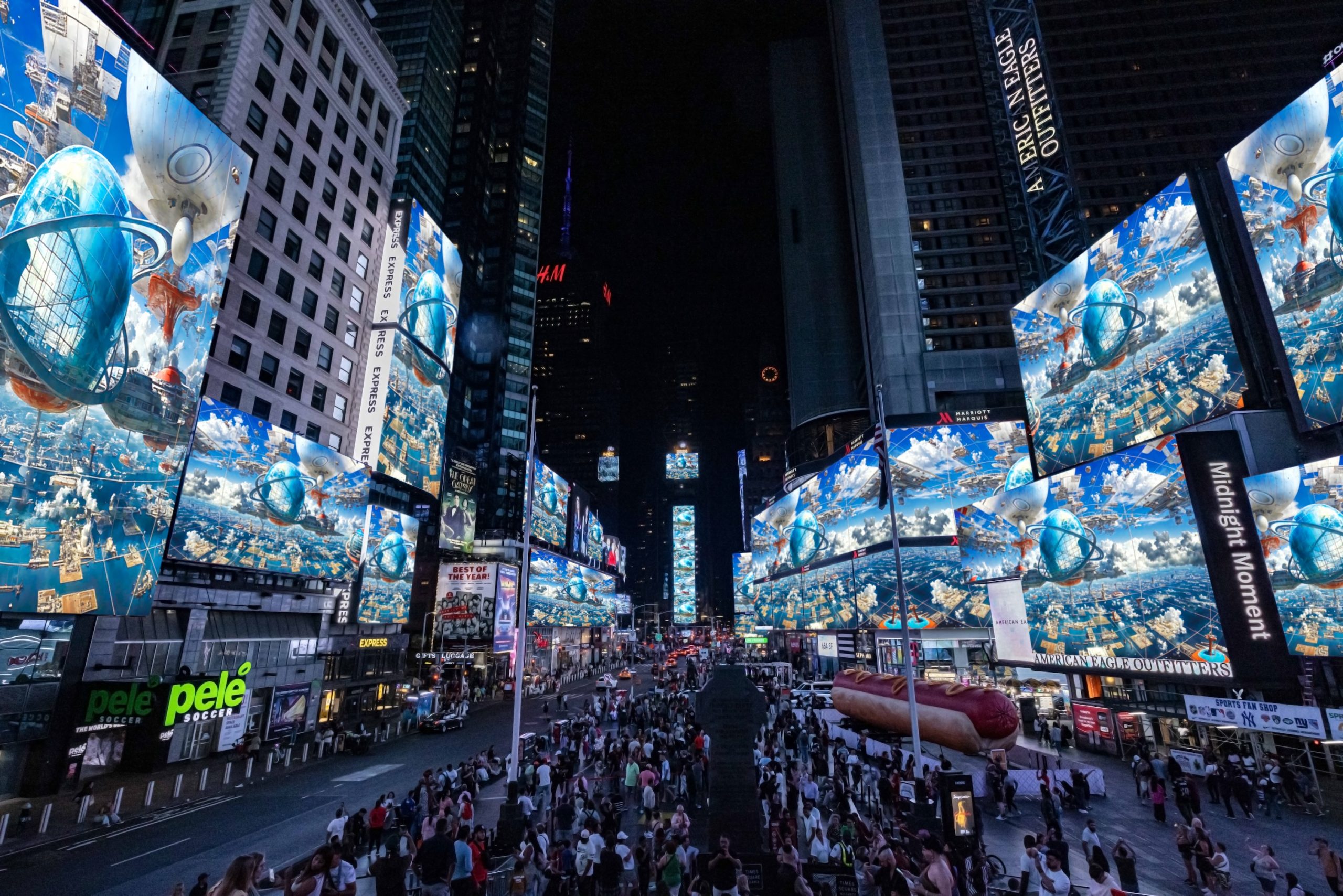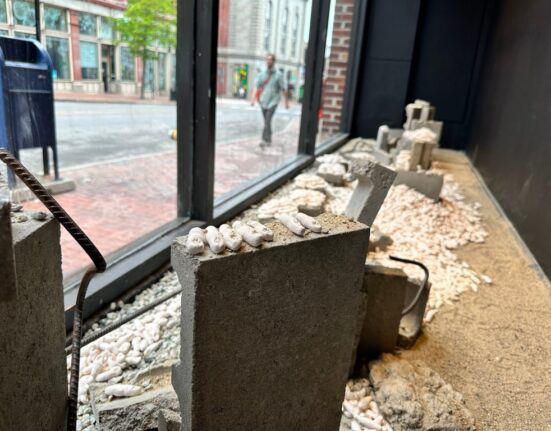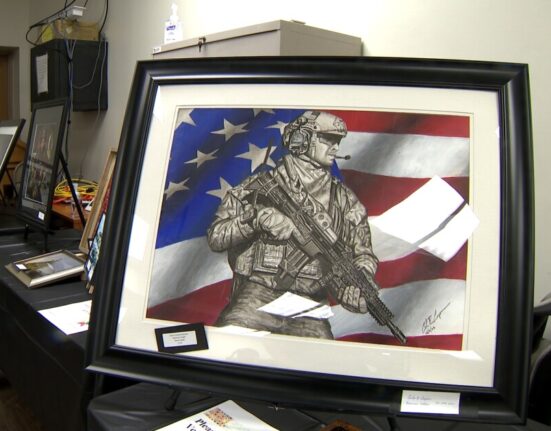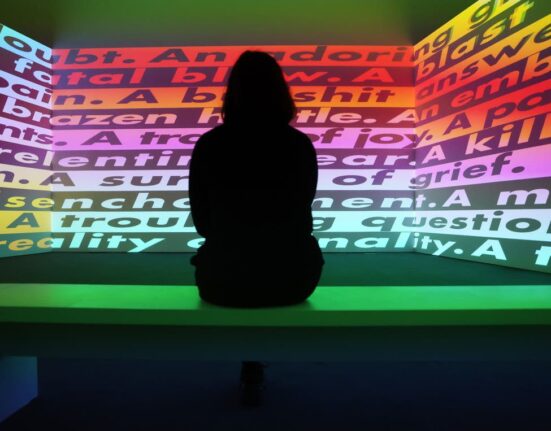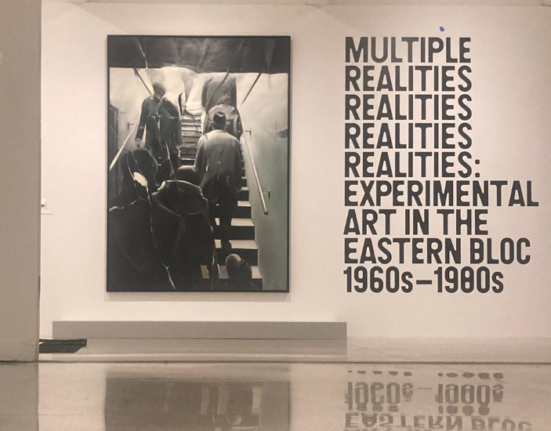Artist Marco Brambilla is no stranger to screens, especially unconventional ones. At 28, he directed a Hollywood film starring Sylvester Stallone, but feeling unfulfilled by the commercial film industry, he pursued an artistic career using film instead. Brambilla’s work draws heavily from media culture and postmodern society, recontextualizing found imagery to create hypnotic, expansive film collages. As a new media artist, his versatile work fits seamlessly into today’s digital, screen-saturated environment.
My first encounter with the artist’s work was in the elevator of the Standard Hotel in New York. As the elevator ascended, his video Civilization depicted a journey to heaven; as it descended, the video reversed, ending in a hellish world. This trippy journey from heaven to hell, within a few seconds in the dark elevator leading to the nightclub on the top floor, earned Brambilla a reputation beyond the traditional art world audience.
Last year, Marco Brambilla created a video installation for Las Vegas’s Immersive Venue, the Sphere, as part of U2’s inaugural concert series. The Sphere’s 160,000 square-foot screen with 16K resolution, the largest and highest-resolution in the world, attracted over 663,000 attendees, showcasing digital imagery as the quintessential medium of our digital age.
Fittingly, Brambilla is also a veteran of Manhattan’s famed Times Square. Marked as the second edition of the ongoing partnership with Times Square Arts, Artnet co-presents Marco Brambilla’s “Approximations of Utopia.” This will be his third time showcasing in Times Square, with his first appearance dating back to the 90s when there was only one big screen. This new work recreates the architectural environments of six historic World Expositions: Brussels (1958), New York (1964), Montreal (1967), Osaka (1970), Seville (1992), and Shanghai (2010), envisioning a future world fair using A.I.-generated and archival imagery.
I chatted with Marco Brambilla about his new work, his inspirations from his childhood visits to World Fairs, and his long-standing relationship with new technology.

Installation view of Marco Brambilla’s “Approximations of Utopia” presented by Times Square Arts. Photo: Michael Hull Photography.
Where does the inspiration for “Approximations of Utopia” come from?
I grew up visiting World Expos with my father. They looked like the future to me: bright and electric. My father was very interested in architecture, so for him, it was more about the architecture. For me, it was more about the technology. When I was a young boy, I built transistor radios and pocket calculators and had a very strong affinity for technology.
We moved from Italy to Montreal when Expo ’67 was on. That was my first exposition. After that, we took a trip to Japan, so I happened to be in Osaka for the Expo as well. In a way, it was like this incredible, utopian technological view of the future, and it left a real impression on me.
Today, we’re living in a future that both mirrors and surpasses those visions. The past Expo sites now feel like time capsules. Some of them have been demolished, some have been turned into office campuses, and some have been preserved better than others. I thought there was an interesting kind of nostalgia to it.
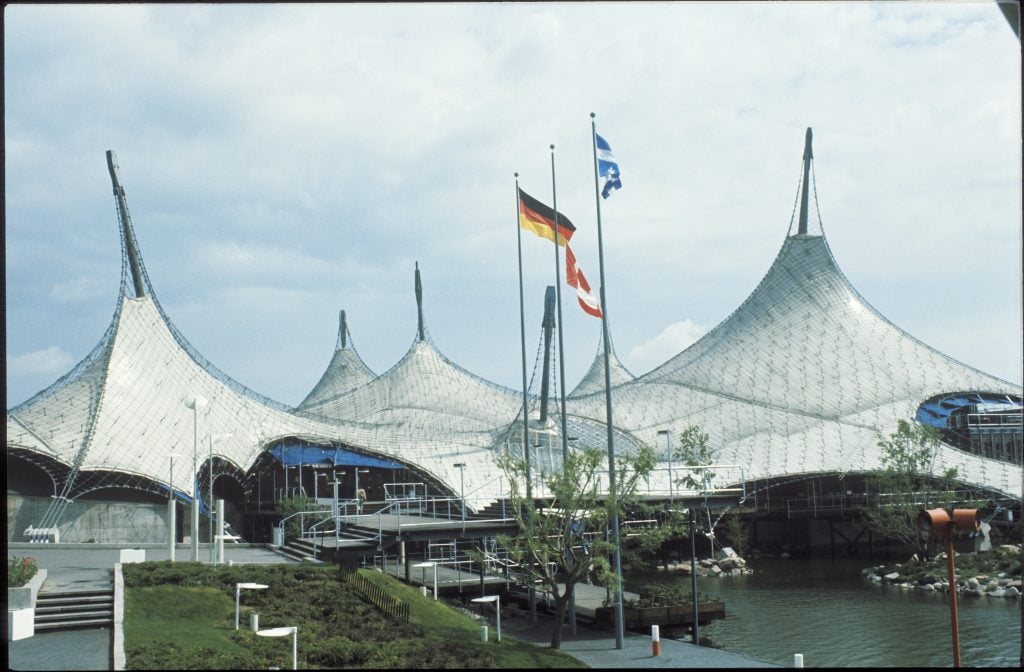
Pavilion of World Exhibition, Montreal 1967 (Photo by Konrad Bäschlin/RDB/ullstein bild via Getty Images)
I also really like Archigram and Peter Cook, the architects in the ’70s. They designed these physical havens, described as “Plug-in Cities” where you would have a replicable scene that would move from community to community and contain all the cultural and entertainment aspects we experience in a big city.
This concept of a physical utopian situation for arts and culture was very interesting to me. Now, as we’ve moved into a kind of post-physical era, many of these communities exist more online. Our hopes and dreams have migrated into a virtual world from the physical world.
Using the technology of the moment, artificial intelligence, I wanted to explore how machines could resurrect those memories and imagine our future. Each Expo had a “Spirit Line” that usually promoted the concept of “Better living through technology.”
The AI tools used in making this work were trained on visuals illustrating our aspirations for the future as presented by past Expos, so this is a vision skewed towards hope, an abstract utopia without borders.
This is not the first time you’ve used A.I. in your work. Could you walk us through the technical process of creating “Approximations of Utopia”?
This project started with the emergence of A.I. image-generating tools, using each new iteration of the technology. We began the process about 18 months ago, training A.I. on both Google searches and archival imagery. We used Stable Diffusion and the initial version of DALL-E to create sketches. I wanted to resurrect the spirit of each Expo, so I used applications like a paintbrush and sketching tool.
We started with searches and then trained our own private library with archival material—mostly images and some data for each of the events. The result was interesting because it’s always skewed towards the most plentiful information available online. In both cases, the A.I. helped inform which specific structure I would focus on for the final piece; then, we produced an incredible amount of animations. Once I had it in the world of CG, where I had much more control, I was able to create a canvas that was a collage similar to other work I’ve done using film samples, but in this case, it was all using computer-generated objects based on A.I. Finally, I used another A.I. tool to add texture, background elements, and randomness.
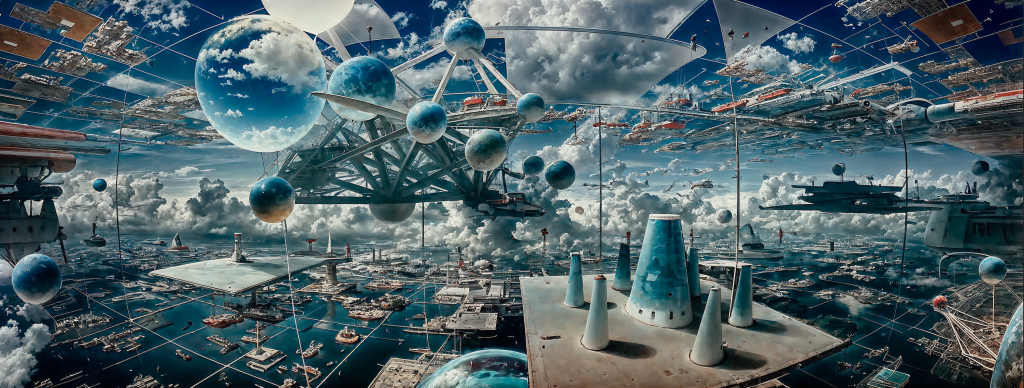
Courtesy of Marco Brambilla studio.
The final product embraces A.I.’s faults and unpredictability, blending it with traditional computer graphics to create a composite—a patchwork of past Expos and A.I. advancements. I felt that the landscape I wanted to express was set in infinite time. Time doesn’t really exist for machines the way it does for humans. I found that the more specific you try to be with results from A.I., you face natural resistance, as this technology, by its very nature, is an encyclopedic aggregator. Therefore, trying to be specific is philosophically at odds with the way the technology is designed to function.
We’re now at the “Lumière Brothers” stage of A.I., which will continue to progress as future versions become more widely adopted to create images as well as videos.
Let’s talk about the idea of Utopia, as this is a poignant topic in the strange times we’re living in today. With the progression of generative A.I. and the anticipation of a hypothetical artificial general intelligence (AGI), for some the technology evokes theological narratives that promise human salvation and a more utopian world. Others are fearful of its impact on society. What is your view on the technology?
Well, I think the question is not whether A.I. will shape our future, but how we will shape the role of A.I. in our lives.
I’m kind of a cautious optimist. I’ve always been fascinated by technology. It’s a very strange relationship. The amount of progress we’ve made—there are things we’ve gained and things we’ve given up. I think we gave up things like privacy. We gave up certain things that we had taken for granted in the past.
A.I. is transforming how we view our past and shape our future. The allure of this technology is undeniable. However, A.I. is at once transformative and destructive, and we run the risk of becoming passengers to our past and our future. By embracing A.I., we may be surrendering our agency, relinquishing control over the direction of our future. The autonomy that once defined us as human beings is at risk, as we become more reliant on machine intelligence to make decisions, guide our actions, and shape our destinies.
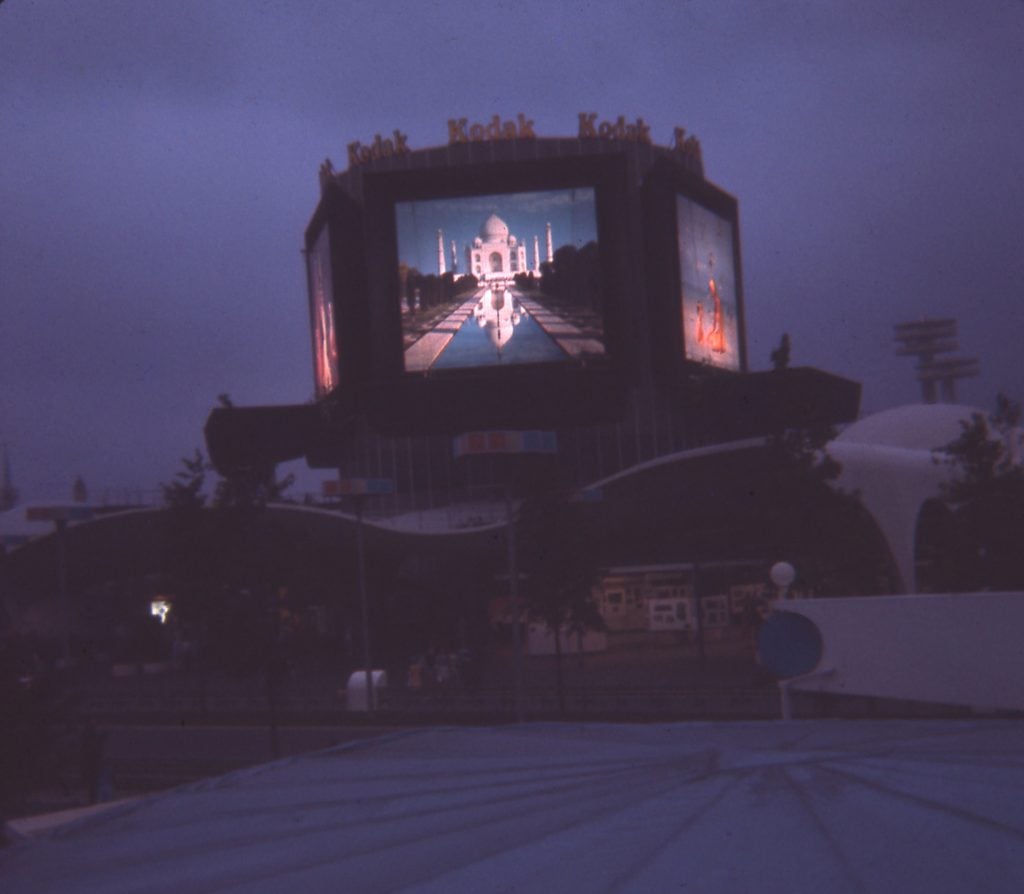
Kodak Pavilion at night during the New York World’s Fair, Flushing Meadows, New York City, New York, 1964. Photo: Morse Collection/Gado/Getty Images.
In “Approximations of Utopia,” I chose to use A.I. to reimagine a hopeful future, to capture the dream of Utopia. Yet, this vision is virtual, a digital construct that exists without the anchor of physical reality.
This piece is about the optimistic side, so it’s about the resurrection of the concept of “Better Living Through Technology,” because each Expo tended to introduce a new kind of technology or the promise of a better future through technology. Whether it was Kodak introducing a 360-degree movie theater in 1964, or in Osaka, where they projected films onto a screen made of mist and water—all kinds of breakthrough technologies—the future Expo is utopian, not dystopian.
It’s also what’s needed in times like now.
Absolutely!
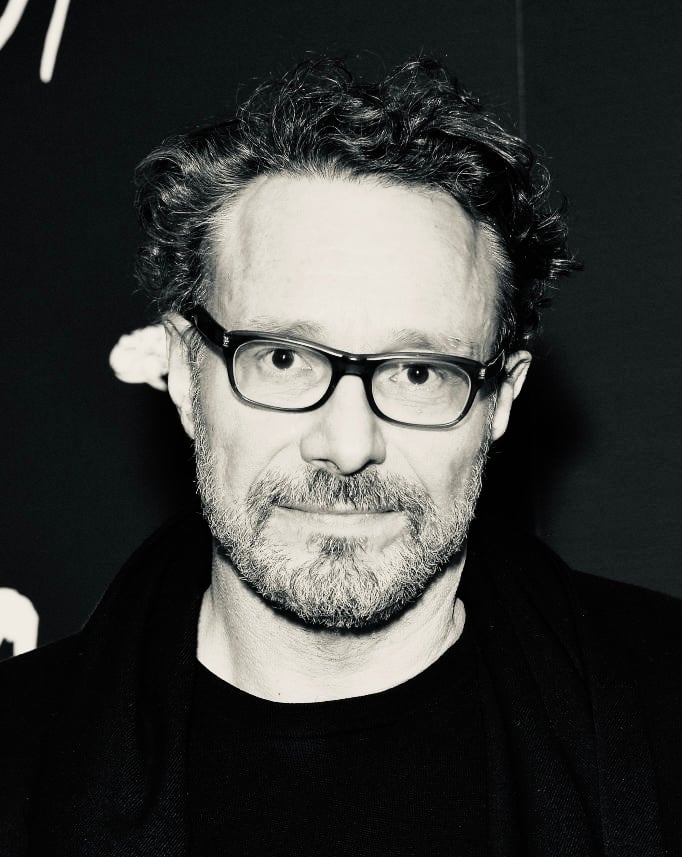
Marco Brambilla attends in New York City. (Photo by D Dipasupil/FilmMagic)
You’ve had a long history with Times Square. It’s fascinating to think that you were exhibiting on the first big screen in Times Square in the ’90s, and in 2015, there were 54 screens participating in Midnight Moment. Now, there are almost 100! What is it like to showcase your work here over the years?
I remember the first time I went to New York from Canada with my family. We went to Times Square, and they were building the Marriott Marquis hotel, with its giant atrium, it had this enormous cement column in the center. It also had the first revolving restaurant. It was quite fantastic back then.
I later lived in New York for 12, 15 years. I’ve obviously been to Times Square many times. I’ve seen it develop and expand, and it’s become very much like New York itself. It’s always a dynamic space with an energetic feeling.
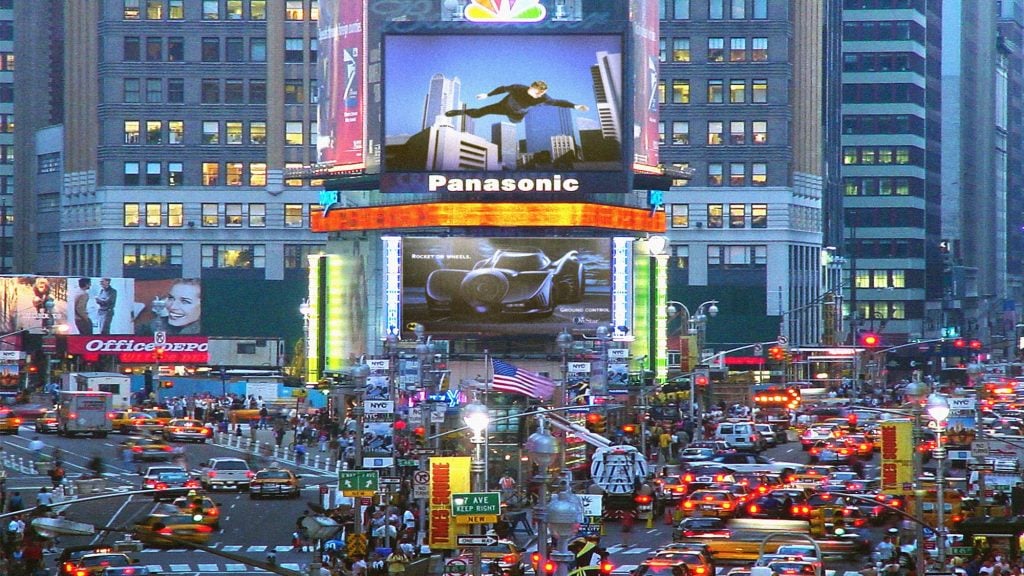
Marco Brambilla’s Superstar (1999) commissioned by Creative Time in Times Square. Courtesy of Marco Brambilla Studio.
When you showed Superstar in 1999, was that the first big screen in Times Square?
I’m not 100 percent sure, but certainly it was the only one that was available to Creative Time, and I think it was No.1 Times Square, sitting above the NASDAQ ticker. Anne Pasternak was the curator.
You used the technology of 180 cameras mounted in a 360 degree ring to create a “Bullet time effect”.
Yes, and that was done before the Matrix movie came out!
In 2015, You showed “Apollo XVIII” during Midnight Moment in 2015, a fictional NASA mission to the moon.
I was commissioned by NASA to make a work about the space program. The concept was to create a fictitious space launch. So I called the work Apollo 18. Obviously, there were only 17 Apollo missions, but they built a rocket for Apollo 18 that was never used. By that point, the American space program wasn’t attracting enough attention, so they decided to stop the Apollo program. Before midnight, the countdown would start, and then at midnight, the rocket of Apollo 18 would lift off.
When I showed Apollo XVIII on 50 screens, it was a challenge for the work to hold its ground with the surrounding programming. Now, with nearly 100 screens, it feels like a true canvas, offering a cohesive, uninterrupted showcase. You can see the Midnight Moment from almost every sightline.
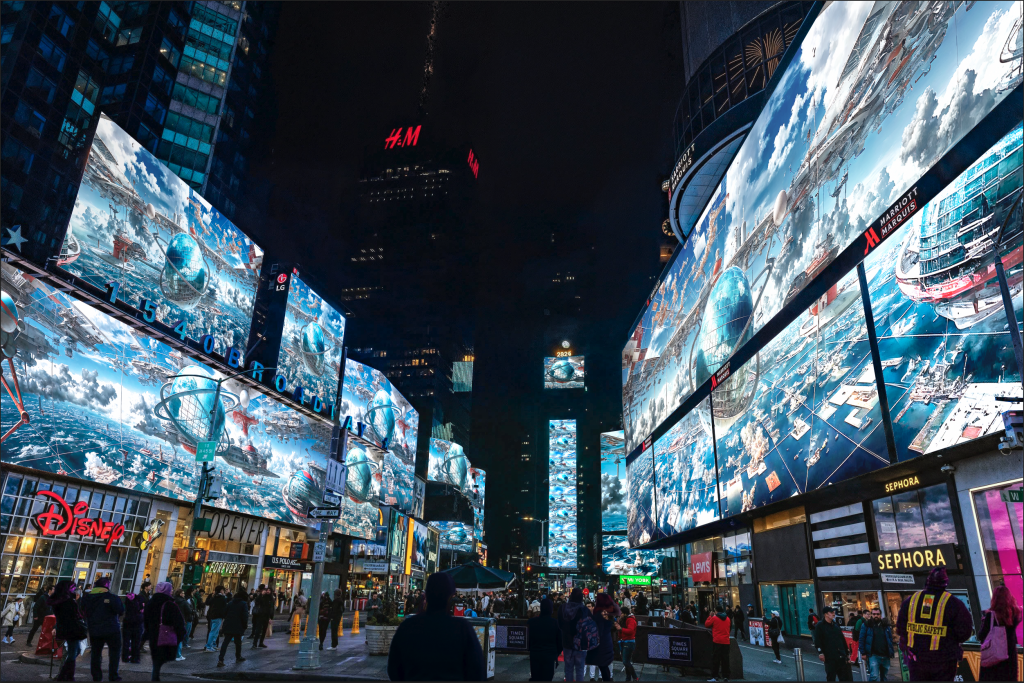
Installation view of Marco Brambilla’s “Approximations of Utopia” presented by Times Square Arts. Photo: Michael Hull Photography.
Many of your works reference visual culture, sampling, and re-contextualizing found images to create a state of sensory explosion. Is there a unifying theme that threads through your practice?
I use spectacle to comment on spectacle. We live in a constant state of sensory overload, and my work aims to highlight this tension. The juxtaposition of spectacle and serenity in this work speaks to our current state, commenting on the overload we have become accustomed to. The takeover of Times Square screens, for instance, serves to re-center focus and offer a more soothing, peaceful landscape. Despite being originally derived from data and algorithms, the feeling is definitely more utopian than our current urban physical world.
What areas of fascination are inspiring you at the moment?
Our relationship to technology has been a recurring theme in my work, both in concept and execution.
I’m now also interested in incorporating performance into my practice with collaborators I find inspiring, like the choreographer Damien Jalet, to create experiences that crossover from the physical world into the virtual.
As an artist working with the medium of video, from cinema screens to the digital billboards in Times Square to the Sphere in Las Vegas, you have presented your work on almost every big screen imaginable. Do you have a dream project that is still on your checklist?
I’ve presented my work on various large-scale screens, including the Sphere in Las Vegas and Outernet Arts in London. I see these as site-specific installations, where the medium is part of the message—in the tradition of Archigram’s “plug-in city,” where cultural events would “activate” a city by being shown at large scale and in non-traditional ways. In an upcoming project, I will use projection mapping on rock formations in a desert, which I hope will create a similar dichotomy in a natural setting.
Follow Artnet News on Facebook:

